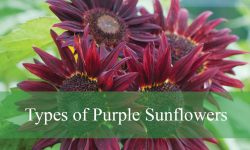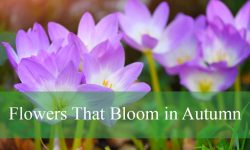Weeds with purple flowers can be both beautiful and troublesome in gardens, fields, and lawns. These plants often spread quickly, taking over spaces meant for more desirable plants. Despite their reputation, many of these purple-flowering weeds are easy to identify and thrive in a variety of habitats across North America and Europe. Knowing how to spot them is an essential skill for anyone managing their outdoor spaces.
This guide will introduce you to 35 different types of weeds with purple flowers, highlighting their unique characteristics and providing helpful identification tips. From delicate blooms to larger, more invasive species, these plants differ in size, color, and growing conditions. While some are harmless, others can quickly become a nuisance, so understanding their features is crucial for effective management.
By the end of this article, you’ll have a comprehensive list of common weeds with purple flowers, along with pictures and practical identification tips. Whether you’re looking to remove these plants from your garden or simply want to learn more about them, this guide will equip you with the knowledge to handle these purple-flowering weeds with confidence.
Common Weeds with Purple Flowers
Purple Deadnettle (Lamium purpureum)

Purple Deadnettle is a fast-spreading annual weed from the mint family, known for its reddish-purple leaves that appear atop green foliage. It typically grows to about 5–10 inches tall and has square stems, which are characteristic of mint relatives. This plant thrives in disturbed areas such as gardens, fields, and roadsides.
It is most commonly seen in early spring, often appearing before many other plants emerge. Purple Deadnettle prefers moist, fertile soil and can form dense patches that outcompete other vegetation. Its ability to spread quickly through seeds makes it a persistent problem for gardeners and farmers alike.
The plant produces small, tubular flowers that are pink to purple in color, blooming from March through May. The flowers attract bees and other pollinators, providing an early food source. Despite being a weed, it has some value in supporting early-season pollinators.
Henbit (Lamium amplexicaule)

Henbit is a common annual weed, closely related to Purple Deadnettle, and is also a member of the mint family. It features soft, rounded leaves with deep scallops and a fuzzy texture. The leaves grow directly from the stem without petioles, which helps distinguish it from similar plants.
This weed is commonly found in lawns, gardens, and along roadsides, where it thrives in moist, nutrient-rich soil. Henbit germinates in fall or early spring and can spread rapidly if left unchecked. It’s especially noticeable in early spring when little else is growing.
Henbit produces tiny, purple tubular flowers that emerge in clusters from the upper leaf axils. These flowers typically bloom from March through May and attract early-season pollinators. Its low-growing, sprawling habit makes it a frequent nuisance in turfgrass.
Ground Ivy / Creeping Charlie (Glechoma hederacea)

Ground Ivy, also known as Creeping Charlie, is a perennial weed known for its aggressive growth and trailing habit. It has kidney-shaped, scalloped leaves and square stems that root at the nodes as they creep across the ground. The foliage emits a strong minty odor when crushed.
It thrives in shady, moist environments like lawns, woodland edges, and garden beds. Ground Ivy spreads through both seeds and creeping stems called stolons, making it difficult to remove once established. It’s especially troublesome in turfgrass, where it forms thick mats.
In spring, it produces small, funnel-shaped flowers that are light purple to bluish-violet in color. The flowers grow in clusters and are often pollinated by bees. This plant blooms from April to June, but its invasive nature makes it more of a headache than a delight.
Wild Violet (Viola spp.)

Wild Violets are low-growing perennials that feature distinctive heart-shaped leaves and rich, violet-purple flowers. They form dense mats in shady and moist areas, where they can crowd out grass and other desirable plants. The foliage is smooth and often appears glossy.
These weeds are commonly found in shaded lawns, woodland edges, and garden beds. They spread through both underground rhizomes and seeds, making them difficult to eradicate. Their resilience and preference for shade make them a persistent lawn invader.
Wild Violets bloom in spring and sometimes again in fall, producing charming purple flowers with five petals. Though attractive, their presence in lawns can be unwelcome due to their tenacity. The flowers can vary in color from deep purple to white or bluish hues.
Forget-Me-Not (Myosotis spp.)

Forget-Me-Nots are delicate herbaceous plants known for their small, five-petaled flowers that range in color from bright blue to purple. The flowers often have a yellow or white center and bloom in dense clusters at the top of the stems. The plant typically grows about 6 to 12 inches tall.
These plants are often found in moist, shaded environments such as woodland edges, along streams, or in damp garden spots. They thrive in cool, temperate climates and prefer rich, well-drained soil with consistent moisture. Their self-seeding nature allows them to spread rapidly.
Forget-Me-Nots bloom in late spring and early summer, usually from April to June. The charming flowers attract pollinators and are often grown as ornamental plants, but they can become weedy in favorable conditions. Their romantic name and nostalgic bloom make them a garden favorite despite their invasiveness.
Selfheal / Healall (Prunella vulgaris)

Selfheal, also called Healall, is a low-growing perennial herb with a spreading habit and small, purple flowers. It has oval, slightly hairy leaves and square stems, a trait it shares with other members of the mint family. It typically grows 4 to 12 inches tall and spreads by creeping stems.
This plant is often found in lawns, meadows, and open woodlands. It prefers moist, well-drained soil and can tolerate partial shade to full sun. Selfheal is valued in some traditional medicine practices for its supposed healing properties, hence the name.
The tubular flowers of Selfheal appear in dense spikes from late spring to early fall, usually from May through September. The blooms are purple to violet and attract bees and butterflies. Though often considered a weed, its medicinal history and ecological benefits give it a dual identity.
Purple Loosestrife (Lythrum salicaria)

Purple Loosestrife is a tall, herbaceous perennial that can grow up to 5 feet in height. It is easily identified by its striking spikes of vibrant purple flowers that bloom profusely from mid to late summer. The leaves are narrow, lance-shaped, and arranged in opposite or whorled patterns along the square stems.
This plant is notorious for its invasive nature, especially in wetland environments across North America and Europe. It thrives in moist soils, along streambanks, ponds, and marshes, where it often outcompetes native vegetation. Its ability to form dense colonies makes it a serious threat to biodiversity in wetland habitats.
Purple Loosestrife blooms from June to September and can produce hundreds of thousands of seeds per plant, which spread through water, animals, and human activity. Despite its beauty, it is considered a noxious weed in many regions due to its ecological impact.
Canada Thistle (Cirsium arvense)

Canada Thistle is a deep-rooted perennial weed that produces soft purple to lavender flower heads atop spiny, branched stems. It grows up to 4 feet tall and has distinctive lobed leaves with sharp spines along the margins. Unlike some thistles, its flower heads are smaller and more delicate in appearance.
This species is widespread across North America and Europe, thriving in disturbed soils, pastures, roadsides, and crop fields. It spreads aggressively through both seeds and extensive underground root systems, making it particularly difficult to control once established.
Canada Thistle blooms from June through August, attracting bees and butterflies. Its prolific root system can regenerate new shoots from even small fragments, allowing it to quickly dominate fields and outcompete native plants.
Musk Thistle (Carduus nutans)

Musk Thistle is a biennial plant known for its large, showy purple flower heads that nod or droop at the top. The flowers, which can be 1.5 to 3 inches wide, sit atop spiny stems that can reach over 6 feet tall. Its deeply lobed, sharply spined leaves have a whitish midrib.
Commonly found in pastures, roadsides, and open fields, Musk Thistle prefers disturbed ground and thrives in full sun. It is native to Europe and Asia but has become invasive in many parts of North America, where it reduces forage quality and displaces native plants.
This species blooms in late spring to early summer, from May to July. Each plant can produce thousands of wind-dispersed seeds. Its spiny nature makes it unpalatable to grazing animals, contributing to its unchecked spread in many rangeland environments.
Common Thistle (Cirsium vulgare)

Common Thistle, also known as Spear Thistle or Bull Thistle, is a robust biennial weed with tall, spiny stems and broad leaves covered in sharp prickles. The plant can grow up to 5 feet in height and features bright purple, globular flower heads that bloom atop branched stems.
It is widespread throughout Europe and North America, thriving in open fields, roadsides, pastures, and disturbed lands. This thistle prefers full sun and well-drained soils and often colonizes areas where other vegetation is sparse. Its spiny nature deters grazing, giving it an advantage in rangelands.
Blooming from June to September, the plant’s flowers are a favorite of pollinators, especially bees and butterflies. Despite its ecological value to some insects, its aggressive growth and sharp spines make it undesirable in agricultural and managed landscapes.
Spotted Knapweed (Centaurea stoebe)

Spotted Knapweed is a short-lived perennial or biennial weed that produces clusters of light purple flowers with fringed edges. The flower heads sit atop slender, gray-green stems and are surrounded by bracts marked with black tips, giving them a spotted appearance.
Native to Europe, this species has become highly invasive across North American grasslands, rangelands, and roadsides. It thrives in dry, sandy soils and open areas where it can quickly outcompete native grasses and forbs. Its deep taproot allows it to survive drought conditions.
Spotted Knapweed typically blooms from June through September and can release chemicals into the soil that inhibit the growth of neighboring plants—a process known as allelopathy. Its spread reduces biodiversity and forage availability, making it a concern for conservationists and ranchers.
Bugleweed (Ajuga reptans)

Bugleweed is a low-growing, mat-forming perennial that spreads via stolons and is often used as a groundcover in landscaping. It has shiny, dark green to purplish leaves and produces dense spikes of small, bluish-purple flowers in spring. The plant grows just 6 to 9 inches tall.
Native to Europe, Bugleweed has naturalized in many parts of North America, particularly in moist, shaded areas like forest edges and lawns. It prefers well-drained soil and can thrive in both sun and partial shade. While it is valued in gardens, it can become weedy in uncontrolled spaces.
Flowering typically occurs from April to June, when the vibrant flower spikes attract bees and other pollinators. Though not considered invasive in all regions, its spreading nature can make it a nuisance in flowerbeds and natural areas if not managed.
Bittersweet Nightshade (Solanum dulcamara)
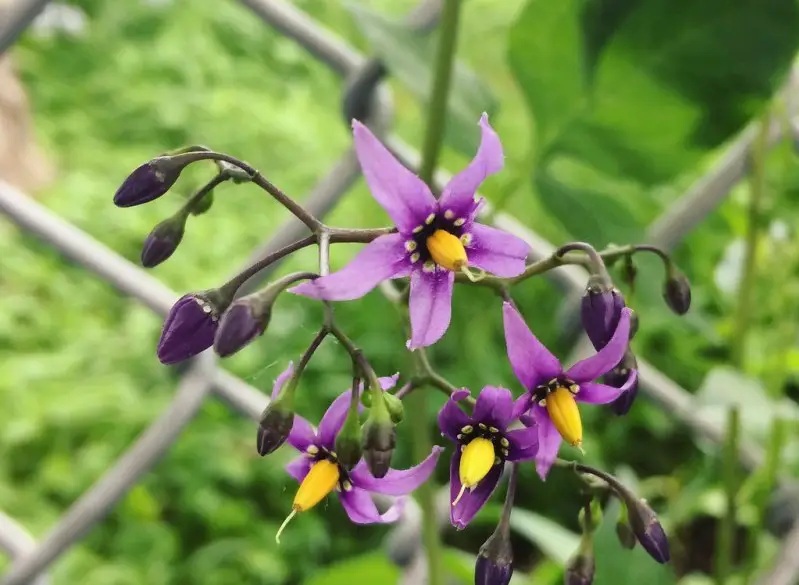
Bittersweet Nightshade is a semi-woody, vining perennial plant known for its star-shaped purple flowers with prominent yellow stamens. The plant often scrambles over fences, shrubs, or other plants and can grow up to 10 feet long. Its leaves are dark green and typically lobed or heart-shaped.
Native to Europe and Asia, Bittersweet Nightshade has naturalized widely across North America, particularly in moist habitats like streambanks, wetlands, and forest edges. It thrives in disturbed soils and shaded areas, making it a persistent weed in both urban and wild environments.
The plant flowers from May through September and later produces bright red, oval berries. Both the berries and foliage are toxic to humans and animals due to the presence of solanine and other alkaloids, making this an ornamental yet potentially dangerous weed.
Black Nightshade (Solanum nigrum)

Black Nightshade is a small annual or short-lived perennial weed that typically grows up to 3 feet tall. It features small, white to purplish flowers with yellow centers that resemble miniature versions of tomato flowers. Its leaves are ovate and slightly wavy at the edges.
This species is found across North America and Europe in disturbed soils, gardens, pastures, and roadsides. It prefers sunny locations with moist, fertile soil but can also tolerate partial shade. While it often appears in cultivated areas, it is generally more common in rural settings.
Black Nightshade blooms from late spring to early fall. The plant produces shiny black berries that are toxic when unripe. Though birds may feed on the ripe fruit, the plant contains solanine and should be handled with caution, especially around pets and children.
Dove’s-Foot Crane’s-Bill (Geranium molle)

Dove’s-Foot Crane’s-Bill is a low-growing, soft-stemmed annual or biennial weed that typically grows up to 12 inches tall. It is easily identified by its small, pinkish-purple flowers with five notched petals and deeply lobed, hairy leaves that resemble a dove’s foot.
Native to Europe and Western Asia, this plant has spread to many parts of North America, especially in lawns, gardens, and roadside areas. It prefers well-drained soil and sunny conditions but can also grow in dry or rocky environments.
The plant blooms from spring to early summer, typically between April and July. Though not aggressive, it can become a nuisance in lawns due to its low growth habit and ability to reseed readily. It is often tolerated in wildflower areas because of its subtle beauty.
Creeping Bellflower (Campanula rapunculoides)

Creeping Bellflower is a perennial weed recognized for its bell-shaped, blue to purple flowers that bloom along tall, unbranched stems. It can reach heights of 2 to 4 feet and spreads aggressively through deep, tuberous roots and rhizomes.
Originally from Europe and Western Asia, Creeping Bellflower has become invasive in many parts of North America. It favors sunny to partially shaded areas with moist, well-drained soils, commonly invading gardens, lawns, and open woodlands.
Blooming from June to September, this plant is attractive to pollinators but problematic for gardeners due to its persistent underground network. Once established, it is difficult to eradicate without digging out the entire root system, making early control essential.
Blue Vervain (Verbena hastata)
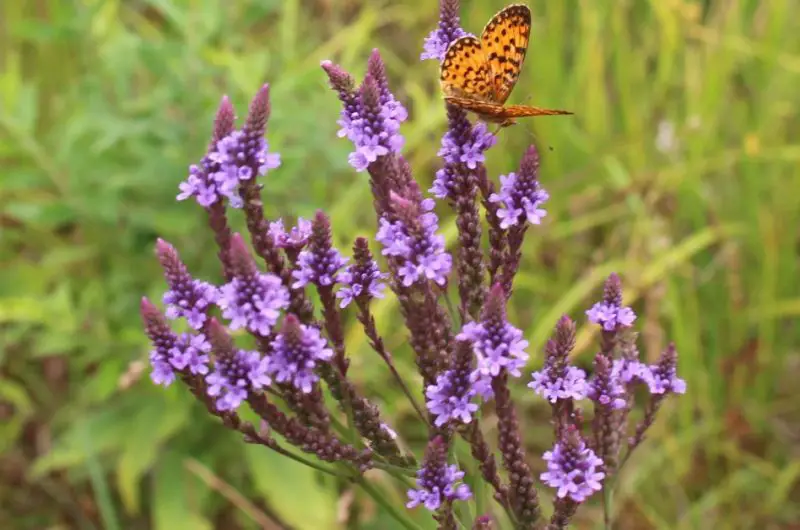
Blue Vervain is a tall, upright perennial that produces striking spikes of small blue to purple flowers. It can grow between 3 and 6 feet tall and features lance-shaped leaves arranged opposite along the square stems, giving it a bold architectural presence in wild areas.
This species is native to North America and commonly grows in moist habitats like stream banks, wet meadows, and lowland areas. It thrives in full sun and is often used in native plant gardens and pollinator habitats due to its nectar-rich flowers.
Blue Vervain blooms from mid-summer through early fall, usually between July and September. The flowers attract a wide range of pollinators, including bees and butterflies. Though not invasive, it can self-seed freely and naturalize in suitable conditions.
Common Burdock (Arctium minus)
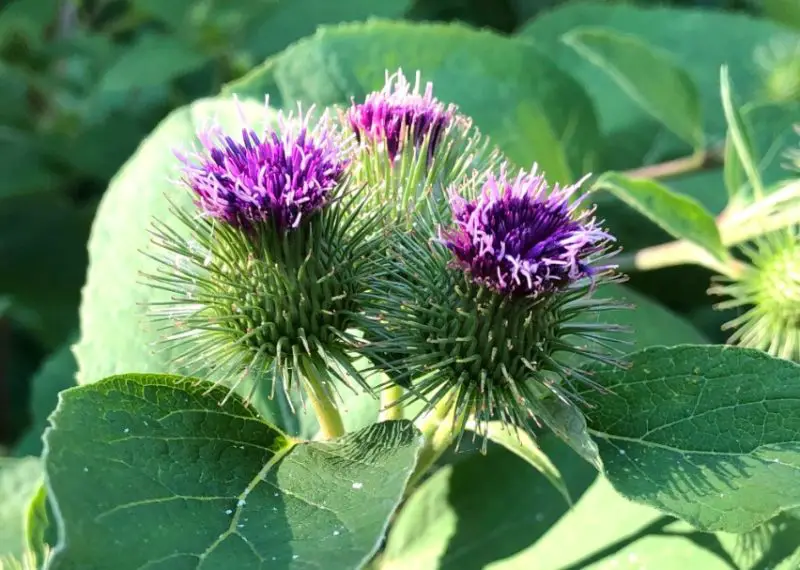
Common Burdock is a biennial plant that can grow up to 6 feet tall, recognized by its large, heart-shaped leaves and purple-pink, thistle-like flower heads. These flowers are surrounded by hooked bracts that later develop into burrs, which cling to animal fur and clothing.
Native to Europe and now widespread in North America, Common Burdock grows in disturbed areas such as roadsides, fields, and pastures. It prefers rich, well-drained soils and sunny conditions but can also tolerate some shade.
Burdock blooms from July to October in its second year. Though the roots have medicinal and culinary uses in some cultures, the plant is often considered a nuisance due to its sticky seed heads and rapid growth. Its burrs can be particularly troublesome for livestock and pets.
Fireweed (Chamerion angustifolium)
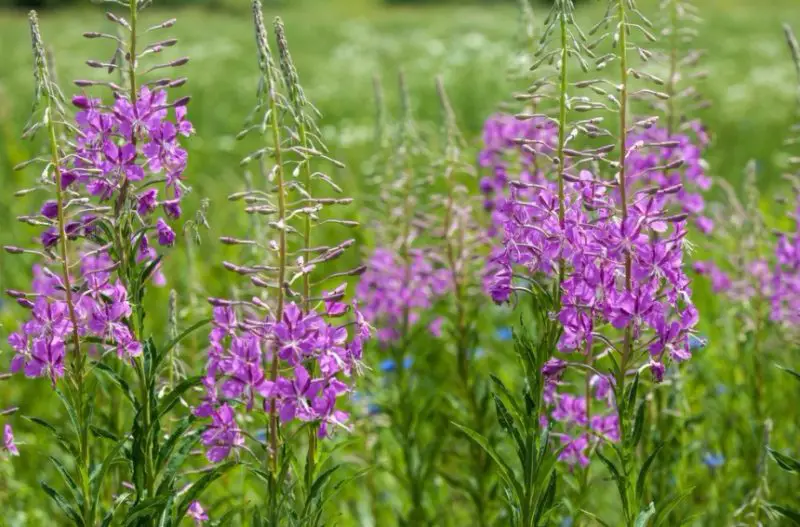
Fireweed is a tall perennial plant known for its vibrant magenta or pinkish-purple flowers that bloom in dense spikes. It can grow up to 5 feet in height, with lance-shaped leaves arranged alternately along the stems. The flowers have four petals and are highly attractive to pollinators like bees and butterflies.
This plant is commonly found in areas that have recently experienced disturbance, particularly after forest fires. Native to North America, Fireweed thrives in open, disturbed lands such as burned forests, meadows, and roadsides. It is often one of the first plants to colonize areas affected by fire.
Fireweed blooms during the summer, typically between July and September, and is known for its rapid growth in the aftermath of wildfires. Though beautiful, it can quickly take over disturbed areas, making it both a beneficial and sometimes unwelcome species in ecosystems recovering from fire.
Common Vetch (Vicia sativa)

Common Vetch is a climbing or trailing plant with delicate purple flowers that appear in clusters. The plant typically grows up to 3 feet tall, with compound leaves that are made up of several small leaflets. Its flowers are pea-like and can range in color from pale purple to a deep violet.
Originally native to Europe, Common Vetch has become widespread across North America, especially in grasslands, meadows, and pastures. It thrives in well-drained, fertile soils and is commonly found in disturbed areas like roadsides and agricultural fields. It is often seen growing among grasses in open fields.
Common Vetch blooms from late spring to early summer, generally from May to June. As a legume, it has the ability to fix nitrogen in the soil, which helps improve soil quality. However, it can also become invasive in some areas and compete with native plant species, especially in pastures.
Patterson’s Curse (Echium plantagineum)

Patterson’s Curse is a strikingly beautiful yet highly invasive plant, with clusters of large, vibrant purple to blue flowers. It can grow up to 3 feet tall and has long, narrow leaves covered with fine hairs, giving the plant a silvery appearance. The flowers are arranged in dense spikes and are most noticeable during blooming season.
Native to Europe, Patterson’s Curse has spread rapidly across Australia and parts of North America, where it is considered a noxious weed. It thrives in disturbed soils, particularly in agricultural fields, pastures, and roadsides. The plant is well adapted to dry, sandy, or loamy soils.
The plant blooms from late spring to early summer, generally from May to July. Patterson’s Curse is toxic to livestock, particularly horses and cattle, making it a serious problem for farmers and ranchers. Its rapid spread and toxicity make it a challenging species to manage in agricultural environments.
American Pokeweed (Phytolacca americana)
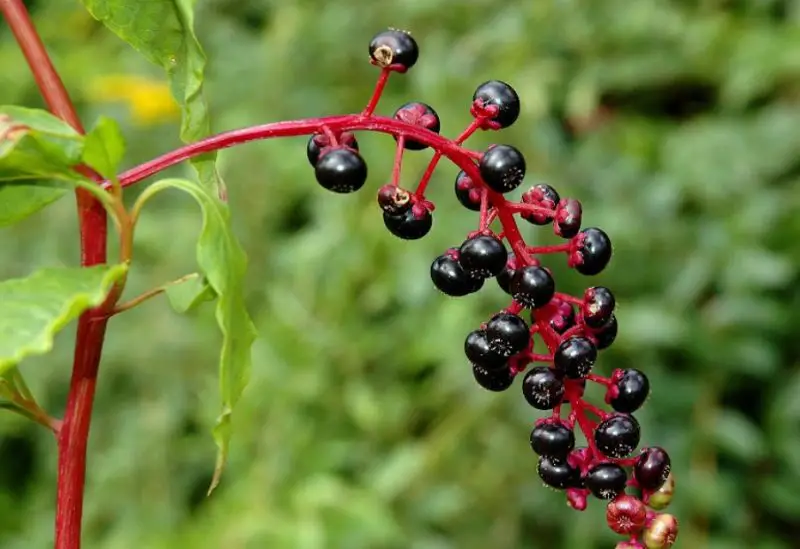
American Pokeweed is a large, perennial plant that can grow up to 10 feet tall, with erect, reddish-purple stems and large, ovate leaves. Its flowers are small and clustered in long, drooping spikes, with a white to purple color. The plant is most recognizable for its striking, dark purple berries that ripen in late summer.
Native to North America, American Pokeweed is commonly found in disturbed areas such as old fields, roadsides, and woodland edges. It prefers rich, moist soils and grows best in areas with full sun to partial shade. Despite its ornamental appearance, it can be aggressive in gardens and agricultural land.
American Pokeweed blooms from mid-summer to fall, with fruit ripening around September. All parts of the plant, especially the berries and roots, are toxic to humans and animals if consumed, containing toxic compounds like saponins and alkaloids. Handling this plant should be done with caution.
Chicory (Cichorium intybus)

Chicory is a hardy, perennial herb with striking blue to purple flowers that bloom in dandelion-like heads. The plant can grow up to 5 feet tall and has elongated, lobed leaves at the base. Its flowers are a brilliant, pale blue, though they can sometimes appear purple, especially in certain light conditions.
Native to Europe, Chicory has naturalized across North America, particularly along roadsides, in fields, and in waste areas. It thrives in dry, well-drained soils and prefers sunny, open spaces. The plant is often found in disturbed habitats where other plants are less able to compete.
Chicory blooms in the summer, typically from June to September. While the flowers are visually appealing, the plant is also valued for its medicinal and culinary uses, with its roots often used as a coffee substitute. However, it can be invasive in some regions, spreading rapidly in poor soil conditions.
Purple Clover (Trifolium pratense)
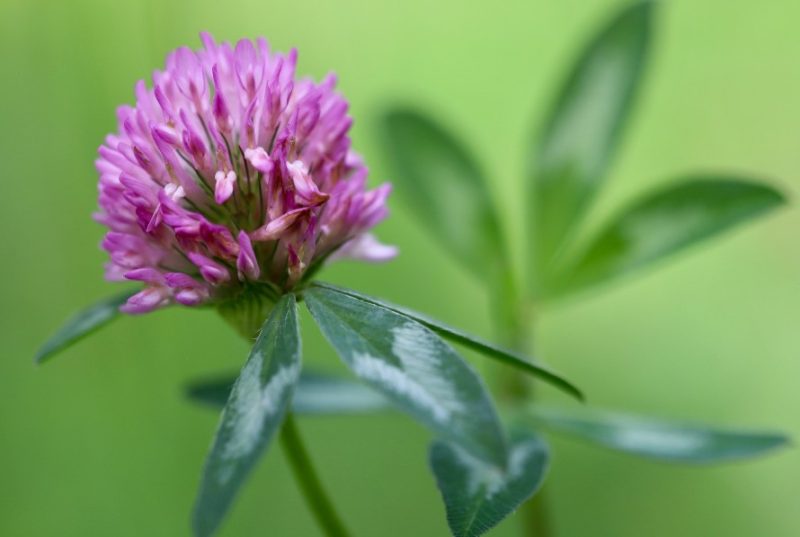
Purple Clover, also known as Red Clover, is a low-growing, perennial herb with attractive purple to pinkish-purple flower heads that sit atop short, hairy stems. It typically reaches a height of 1 to 3 feet and features trifoliate leaves with a distinctive white “V” mark in the center.
Native to Europe and Asia, Purple Clover is commonly found in pastures, meadows, and roadsides throughout North America. It thrives in a variety of soil types but particularly prefers well-drained, moderately fertile soils. It is a common component of grasslands and is often used in cover crop systems to improve soil health.
Purple Clover blooms from late spring to early summer, generally from May to June. It is widely known for its ability to improve soil fertility by fixing nitrogen. Though it is beneficial for soil, it can become invasive in some areas, particularly in agricultural settings.
Speedwell (Veronica spp.)

Speedwell is a small herbaceous plant known for its striking blue-purple flowers that grow in clusters. The plant typically reaches 6 inches to 1 foot in height, with lance-shaped leaves that are opposite along the stem. Its flowers are usually 4-petaled and are often a brilliant, bright blue or purplish hue, making it easy to identify in the wild.
This plant is commonly found in meadows, grassy fields, and lawns, often growing in sunny or partially shaded areas. Native to North America, Speedwell prefers well-drained, slightly acidic soils. It thrives in disturbed areas and is often seen in places where other grasses and wildflowers are present.
Speedwell blooms from early spring to late summer, with its purple flowers attracting bees, butterflies, and other pollinators. Though it can be a charming addition to wildflower gardens, it can spread quickly in lawns and gardens, sometimes competing with other plants for space.
Common Bluebell (Hyacinthoides non-scripta)

Common Bluebell is a beautiful perennial plant that produces vibrant, bell-shaped flowers in shades of purple to blue. The flowers grow in clusters on tall, slender stems and have a distinct sweet fragrance. The plant typically grows around 1 foot tall and features narrow, strap-like leaves that are long and arching.
Native to Europe, the Common Bluebell is often found in woodlands, particularly in areas with moist, well-drained soils. It prefers partial to full shade, thriving under the canopy of trees, where the soil remains cool and damp throughout the growing season. It is a popular flower in spring gardens, known for its lush, carpet-like blooms.
Common Bluebell blooms in late spring to early summer, typically from April to June. The flowers hang downward and have a sweet, delicate fragrance, making them a favorite of pollinators like bees. The plant can spread by both seeds and bulb division, and in some regions, it can become invasive when introduced outside its native range.
Periwinkle (Vinca minor)

Periwinkle, also known as Lesser Periwinkle, is a low-growing, evergreen ground cover with attractive, star-shaped purple-blue flowers. The plant typically grows between 6 to 12 inches in height and features glossy, dark green leaves that create a dense mat. Its flowers bloom from early spring to summer, with each flower consisting of five petals.
Native to Europe, Periwinkle has become naturalized in parts of North America, where it is commonly used as an ornamental ground cover in gardens and landscapes. It prefers well-drained, slightly acidic soils and thrives in shady or partially shaded locations, making it ideal for areas beneath trees or along fences.
Periwinkle blooms from early spring to summer, with its violet-blue flowers being an attractive addition to gardens and lawns. While it is valued for its ornamental qualities, it can spread aggressively and become invasive in some areas, particularly in woodland gardens where it may crowd out native plants.
Dame’s Rocket (Hesperis matronalis)
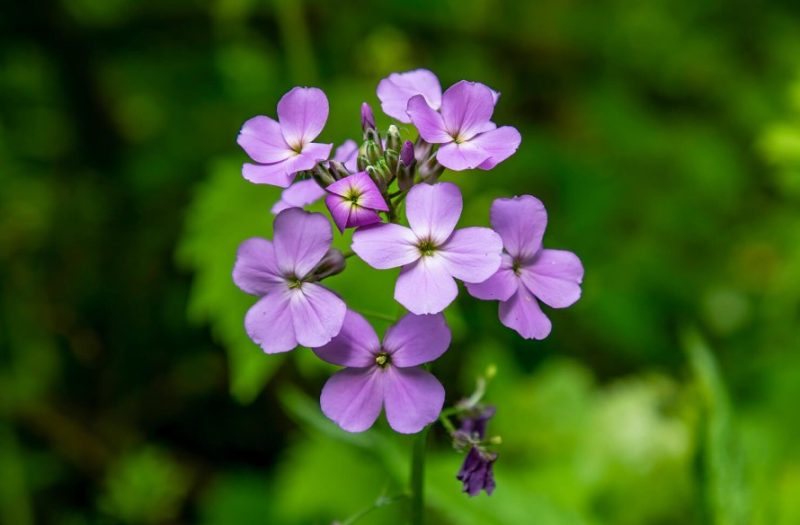
Dame’s Rocket is a tall, biennial plant known for its clusters of fragrant purple flowers that bloom in spring. It typically grows 2 to 4 feet tall and has lance-shaped, green leaves that are often rough to the touch. The flowers range from purple to white or pink, with a strong, sweet fragrance that attracts pollinators such as bees and butterflies.
Native to Europe and Asia, Dame’s Rocket has become widely naturalized across North America. It is commonly found in gardens, along roadsides, and in disturbed habitats, preferring moist, well-drained soils and full to partial sun. It often thrives in areas with disturbed soil or in places where other plants may struggle to grow.
Dame’s Rocket blooms from late spring to early summer, typically between May and June. It is a popular garden plant due to its fragrance and vibrant flowers, but it is considered invasive in some areas because of its ability to spread quickly and outcompete native wildflowers.
Hedge Bindweed (Calystegia sepium)
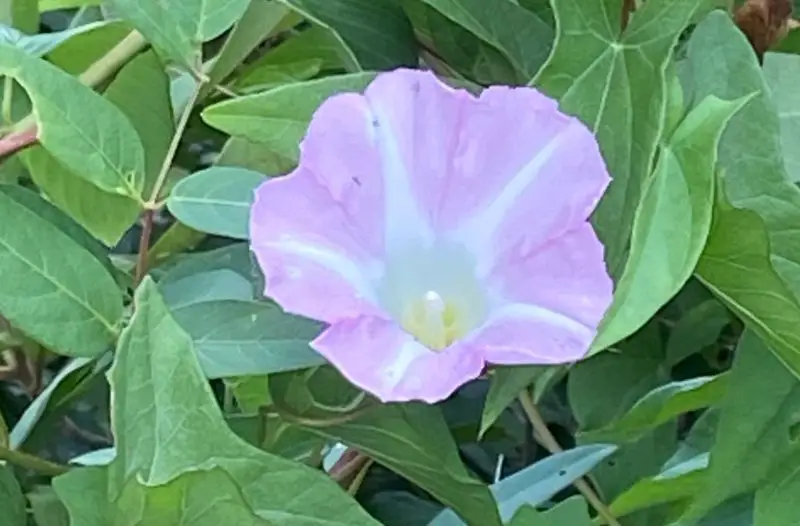
Hedge Bindweed, also known as Wild Morning Glory, is a climbing, perennial vine with trumpet-shaped flowers that range from white to pale purple. The plant can grow up to 10 feet long, with heart-shaped leaves that clasp around stems. The flowers are typically 1 to 2 inches in diameter, with five white or light purple petals forming a funnel shape.
Native to Europe, Hedge Bindweed has spread widely across North America and is commonly found growing along roadsides, fences, and in disturbed areas. It prefers moist, well-drained soils and can often be seen climbing on other plants or structures, such as hedges or trellises, where it can spread aggressively.
Hedge Bindweed blooms from late spring to early fall, with flowers appearing from May to September. The plant is often seen in large swaths of white or purple blooms along roadsides. While attractive, it is considered invasive due to its ability to smother other plants and disrupt ecosystems by competing for light and nutrients.
Lamb’s Ear (Stachys byzantina)

Lamb’s Ear is a low-growing perennial known for its soft, silvery-gray leaves that are densely covered in fine hairs, giving them a velvety texture. The plant typically reaches a height of 12 to 18 inches and produces spikes of pale purple or pinkish-lavender flowers. The flowers are small, tubular, and appear in clusters at the top of the stems.
Native to Central Asia and parts of Europe, Lamb’s Ear is often found in dry, well-drained soils and prefers sunny or partially shaded locations. It is commonly used as a ground cover or ornamental plant in gardens, particularly in rock gardens or as a border plant, due to its attractive foliage and low maintenance requirements.
Lamb’s Ear blooms in late spring to early summer, typically between May and June. While the flowers are small and somewhat inconspicuous, the plant’s soft, woolly leaves are the main attraction. Lamb’s Ear is also drought-tolerant and deer-resistant, making it a popular choice for gardens in areas with dry conditions.
Sweet William (Dianthus barbatus)

Sweet William is a biennial or short-lived perennial herbaceous plant known for its fragrant, colorful flowers. The flowers come in a variety of colors, including pink, red, and purple, and grow in dense clusters, making the plant very eye-catching. The plant typically reaches heights of 12 to 18 inches and has narrow, lance-shaped leaves.
Native to Europe and Asia, Sweet William is commonly found in gardens, meadows, and fields, thriving in well-drained, fertile soils. It prefers full sun but can tolerate partial shade. The plant is often used as an ornamental flower in garden borders and flower beds, where it adds vibrant color and fragrance.
Sweet William blooms in late spring to early summer, with the purple-pink flowers often appearing from May to June. The flowers have a sweet fragrance that attracts pollinators like bees and butterflies, making it a popular choice for pollinator-friendly gardens. It is also known for self-seeding, which allows it to return year after year.
Indian Tobacco (Lobelia inflata)

Indian Tobacco is a small, herbaceous annual plant with delicate, tubular flowers that are usually blue to purple in color. The plant grows to about 1 to 2 feet in height and has narrow, lance-shaped leaves along its stem. The flowers are arranged in spikes and bloom in clusters, adding a splash of color to natural landscapes.
Native to North America, Indian Tobacco is commonly found in moist, disturbed soils such as roadsides, fields, and wetlands. It thrives in full sun to partial shade and prefers well-drained, slightly acidic soils. Despite its attractive appearance, the plant contains toxic alkaloids, making it dangerous if ingested.
Indian Tobacco blooms from late spring to early summer, typically from May to June. Its bright blue or purple flowers are known for attracting bees and butterflies. However, due to its toxic properties, it is not suitable for gardens where children or pets may come into contact with it.
Wild Bergamot (Monarda fistulosa)
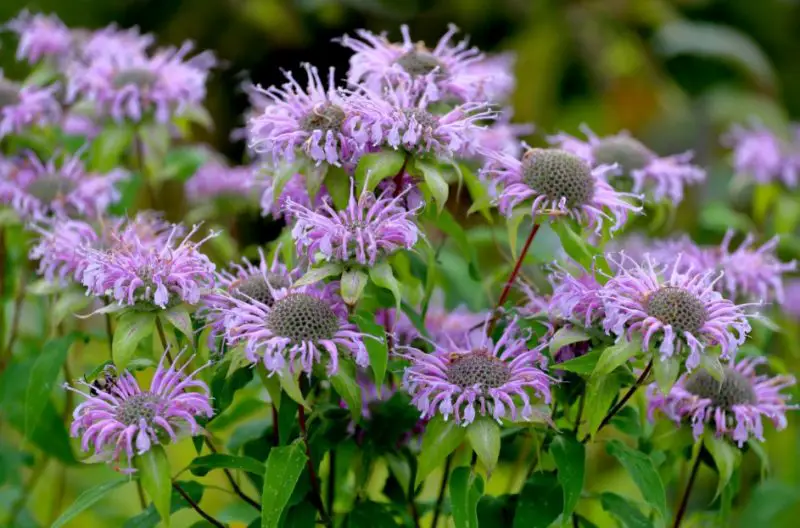
Wild Bergamot is a tall, aromatic perennial plant that produces striking, purple, tubular flowers arranged in dense, rounded clusters. The plant grows between 2 to 4 feet tall and has aromatic, lance-shaped leaves that emit a strong, pleasant scent when crushed. The flowers are known for their ability to attract pollinators such as bees, butterflies, and hummingbirds.
Native to North America, Wild Bergamot is commonly found in prairies, meadows, and woodlands, thriving in dry to moderately moist, well-drained soils. It prefers full sun but can tolerate partial shade, making it adaptable to a variety of growing conditions. The plant is often used in natural landscaping due to its beauty and ability to attract beneficial insects.
Wild Bergamot blooms from mid to late summer, typically from June to August. Its vibrant purple flowers are not only beautiful but also highly fragrant, adding a delightful scent to the garden. It is a favorite of pollinators and is often grown in wildflower gardens to support local ecosystems.
Bladder Campion (Silene vulgaris)

Bladder Campion is a herbaceous perennial plant that typically grows to 1 to 2 feet tall. It has soft, lance-shaped leaves and produces unique, showy flowers that are pale pink to purple, with a characteristic balloon-like structure beneath each flower. This plant often grows in clusters, making it easy to spot in meadows, fields, and disturbed sites.
Native to Europe, Bladder Campion has spread to North America, where it is commonly found in grasslands and dry, sandy soils. It thrives in full sun but can tolerate partial shade. The plant is often seen in roadsides, pastures, and old fields, where it can form dense colonies.
Bladder Campion blooms from late spring to summer, typically from May to June. The flowers are soft pink to purple with a noticeable “bladder” below each one, which gives the plant its name. Its flowers attract pollinators, including bees and butterflies, and its seeds are dispersed by the wind, helping it spread across open fields.
Hellebores (Helleborus spp.)

Hellebores are perennial plants known for their striking, nodding flowers that appear in late winter to early spring. The flowers range in color, with shades of purple, pink, green, and white being common, and are often speckled or marbled in appearance. The plant has leathery, evergreen leaves that persist throughout the year, making it an attractive option even when not in bloom.
Native to Europe and parts of Asia, Hellebores are typically found in woodland and forested areas, where they thrive in moist, well-drained, and slightly acidic soils. They prefer partial to full shade, making them ideal for planting in shaded garden beds, under trees, or in woodland settings. Hellebores are slow-growing and long-lived plants that can tolerate a variety of soil types.
Hellebores bloom in late winter to early spring, often from January to April, depending on the region. The flowers, which can be purple, pink, or white, appear before the new foliage emerges. These plants are particularly prized for their ability to bloom in early spring, providing color and interest in gardens during a time when most other plants are still dormant.





